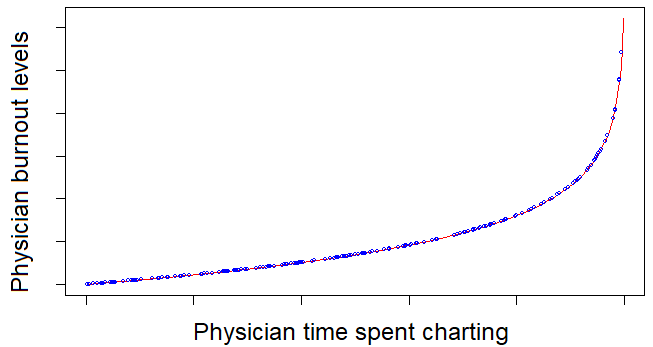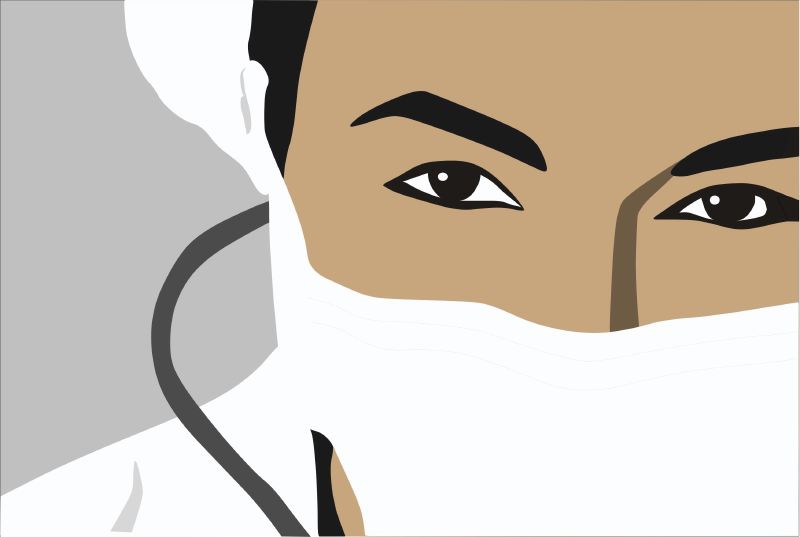
Among the top innovations in medicine that have actually made things worse for physicians is the rise of the (charting) machines. More specifically, the ubiquitous Electronic Health Record (EHR). In this article, we look at the connection between charting and physician burnout. We explore the links between the increasingly burdensome and tedious requirement for comprehensive record-keeping using EHRs, and physician stress. We also examine innovations to try and reduce charting-related fatigue and physician burnout.
Information technology typically is intended to make processes and tasks more efficient.
And in some ways it does: It saves paper, it saves physical chart creation (and destruction), and it saves on office space. Notes are legible and easily transmissible.
Until recently, the medical record primarily served one purpose -for the benefit of the patient and to support patient continuity. Today the electronic medical record has become a place for insurance companies, documenting against potential medical malpractice, collecting additional information for quality assurance and corporate initiatives. But mainly it’s about money.
But where it takes us away from patient care, wastes time, or adds to the already significant burden of clinical work, its value must be questioned. Technology breakdowns, incompatibilities, and sometimes nonsensical requirements can be particularly stressful for clinicians.
Modern corporatized healthcare leadership seeks metrics to determine how to best provide patient care and turns to IT. IT seeks more data to feed algorithms and dashboards, and turns to frontline clinicians to input the data into the EHR. Frontline clinicians manually enter this data, and turn to leadership and say they are burned out. And so, the cycle repeats.
Physicians and nurses especially are becoming clerical workers and not clinicians. This has to change.
Far from being a time-saver, charting is an ever-growing list of things that need to be done. It’s also metastasizing as policies change and medicine becomes more complex and corporatized. No more writing “Patient ISQ” in the paper notes after a cursory ward round.
As the patient progresses, more charting is revealed. If a patient declines, more charting is required to document the decline. If the patient is getting better, clinicians have to chart a discharge and complete all required discharge documentation.
Physicians and nurses are being required to do more and more – often to the detriment of the physician-patient relationship. With electronic notes what should be face-to-face time with the patient is instead has turned into face-to-screen time.
It is disheartening when I feel like I have to allot as much time and care to my computer as I do for my patient.”
A recent survey showed that the time set aside for medical record-keeping has doubled in a decade. Physicians now spend two minutes at the computer for every one minute spent with patients, and the workdays have extended into the physicians’ homelives.
Health IT is not always the savior it is meant to be. EHR charting has been cited multiple times as a reason for physician and nurse burnout. To date there has been no research showing an overall reduction in mortality, improvement in quality of life or reduced hospital admissions.”
As one colleague put it:
“It is disheartening when I feel like I have to allot as much time and care to my computer as I do for my patient.”
After a long shift, the expectation of spending even more hours immersed in front of a screen, writing up every patient seen, filling in senseless compulsory text boxes, and tackling user-unfriendly IT interfaces, and is not a thing of joy. Although the EHR itself is not to blame – it’s just doing what it was coded to do – time spent in the company of the hospital EHR is rarely celebrated by doctors.
Unsurprisingly, this additional charting burden is increasingly recognized as a source of physician burnout. It is the requirement for physicians and other healthcare staff to “chart”, a job which more and more happens “after hours”. In reality, this means physicians usually spend extra unpaid time writing/typing notes on the patients they saw in the day, time which could be spent recharging, discovering the meaning of a work-life balance, or doing all the good things outside of work which keep us sane and give us the energy to serve our patients.
Physicians now spend two minutes at the computer for every one minute spent with patients, and the workdays have extended into the physicians’ home lives
The stats are striking:
The leading cause of burnout amongst physicians surveyed by Medscape is charting and other administrative tasks. Almost 60% of doctors assigned charting the number one stressor contributing to their burnout.
A worked example comes from Intermountain Healthcare, a UT-based nonprofit. (Human) medical assistants (MAs) develop “team documentation” by providing pre-visit and in-room support to improve the efficiency of care and accuracy of documentation. While not yet evidence-based it makes intuitive sense. Another human for connection, task-sharing, and improving efficiency is likely, in our view, to reduce burnout.
One physician cut his total documentation time from 3.5 hours per day to about one hour—a 71% decrease. He has even found that his dictation is more accurate. “Now while I am in the room, I spend nearly the entire visit face to face with the patient.”
Rather than more time at the hospital or charting, we at Physicians Anonymous suggest that more human connection is needed. Yes, we are aware of the irony of using a tech platform to connect burning out colleagues. This way we can connect around the world at low cost 24/7, and get the best out of technology. And we promise, no charting is required.
In this article, we examined the connection between charting and physician burnout, and we explored how human connection may help.
EHRs are a major source of physician burnout. Until systems and technology can relieve the burden, physicians can set boundaries – not EHR work at home—and connect with humans – patients and colleagues – to protect themselves against click fatigue and physician burnout.
